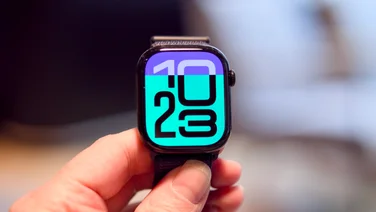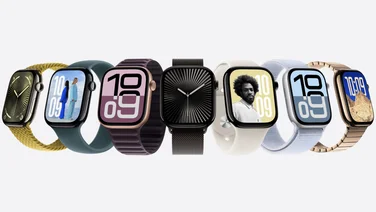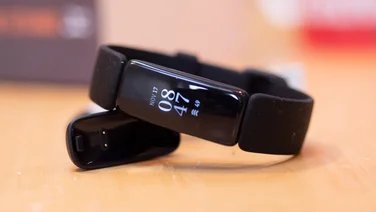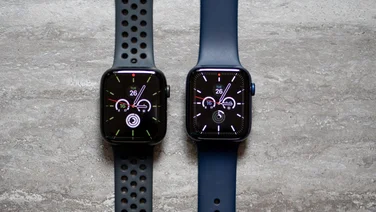To help us provide you with free impartial advice, we may earn a commission if you buy through links on our site. Learn more














- Attractive and easy to use
- Effective parental management tools
- Setup confusing at first
- Battery life is only five days
Fitbit has a huge range of fitness wearables, spanning the whole gamut of products from basic trackers to full-blown smartwatches. But until the appearance of the Fitbit Ace there was a significant gap in this line-up.
Despite the fact that there were previously seven different trackers on the company’s books, there was no product specifically for kids, leaving Garmin to hog the space with its Vivofit Jr and Vivofit Jr 2 wearables.
READ NEXT: Fitbit Versa review
Fitbit Ace review: What you need to know
Well, that hole has now been well and truly filled. The first thing to know, though, is that the Fitbit Ace isn’t targeted at younger kids; instead, it’s for children of eight years or older. Children for whom the chunky, cheery wearables from the likes of Leapfrog and Vtech are a little too childish.
This is reflected in the way the Fitbit Ace looks, feels and works: it’s effectively a Fitbit Alta for those with slimmer wrists. It tracks steps, active minutes and sleep, has a screen so kids can keep tabs on their progress and see what the time is, reminds them when to move and, most importantly, it places restrictions on the social connectivity that makes regular Fitbit products inappropriate for children and provides extra software so parents can see what their kids are doing.














Fitbit Ace review: Price and competition
The price of the Fitbit Ace is £80; the same price as its main rival the Garmin Vivofit Jr 2. The latter is aimed at slightly younger children, though, with a range of Marvel- and Star Wars-themed wristbands on offer and a focus, not just on activity tracking, but also a general rewards-based approach aimed at encouraging kids to do other things, like clean their teeth and do their homework.
Other competition in the kid-focused tech space comes from manufacturers such as LeapFrog and Vtech but, again, these companies focus on products for the younger audience.
Fitbit Ace review: Design and key features
I’ve already outlined briefly what the Fitbit Ace looks like but if you haven’t come across its adult-sized counterpart, the Alta, here’s the lowdown. Essentially, all the tracker’s electronics are built into a small curved aluminium housing about the size of a pen lid, topped with a monochrome P-OLED display and topped and tailed with quick release clips that allow you to swap out for different straps quickly and easily.
It’s a lot more attractive than the Garmin Vivofit Jr 2, which is a plastic pod with a tiny old-school grey-on-grey screen, squeezed into a stretchy rubber strap. It feels altogether more mature.
The Ace’s display isn’t a touchscreen, though. Instead, you navigate through its various displays by tapping the body of the tracker firmly with a finger. The accelerometer, not the screen, detects the taps, cycling through a variety of different displays, including the time and date, of which there are a number of different formats to choose from. The Ace will also buzz when messages and calls are received on the paired phone – if the feature is enabled and if the phone is nearby.














A pair of contacts on the rear allows the tracker to be charged (via a stubby, spring-clip USB charger cable ), synchronisation takes place via Bluetooth and it’s water-resistant, too. It’s worth noting that it isn’t fully waterproof, though, so you’ll have to remind your son or daughter to remove it before swimming.
None of this is particularly exciting or new. Indeed, there are countless other trackers that do precisely the same thing as the Fitbit Ace. The key to the Fitbit Ace’s appeal is the improved Fitbit smartphone app, which adds a number of new, child- and parent-friendly features.
Chief among these is the ability to set up a family account, which then allows the parent or guardian to add one or more children without having to set up an entirely separate account for the child. Kids can then pair the Fitbit Ace with their parent’s phone or their own, where the app can be locked into a special, simplified Kids View with restricted access to a list of pre-approved friends.














It’s a bit confusing to set up and wrap your head around how it works to start with. The fact that you don’t have to use the Kids View if you don’t want to and that you can set it up and pair it without the child having a phone of their own means it’s possible to miss some key features.
I also find it also a little strange that, in Kids View, you have to enter your password to log out, then log in again with your username and the same password to get back to the app’s parent view.
That’s a bit of a pain but, once you’ve got to grips with things, the Ace works just as well as any other Fitbit does: tracking steps, active minutes and sleep, reminding your child to move every hour and motivating them to stay active with badges and challenges.
The latter, part of which involves plotting progress around a series of “virtual” trails and routes, accompanied by maps and great-looking photos, was hit with my daughter and, although she needs no encouragement to stay fit and healthy, it’s easy to see that this sort of approach could encourage less active young people to get up, get out and do more.
Fitbit Ace review: Verdict
There are some disappointments with the Fitbit Ace. You don’t get stair tracking as there’s no altimeter, there’s no heart rate monitor either and, as I pointed out above, the Fitbit Ace isn’t swim proof. What could also be a problem is battery life.
Although it lasts for five days at a time, which isn’t bad in and of itself, it’s not as good as the Garmin Vivofit Jr 2, which can last for months on a single charge. Depending on how old your child is, or how organised, that could be an issue. There’s not much point, after all, having a fitness tracker if the battery is flat most of the time.
Aside from those issues, however, it’s difficult to find fault with the Fitbit Ace. As a piece of hardware it does the job and looks excellent, and the accompanying software setup works well. For £80 it’s very reasonably priced, too.





